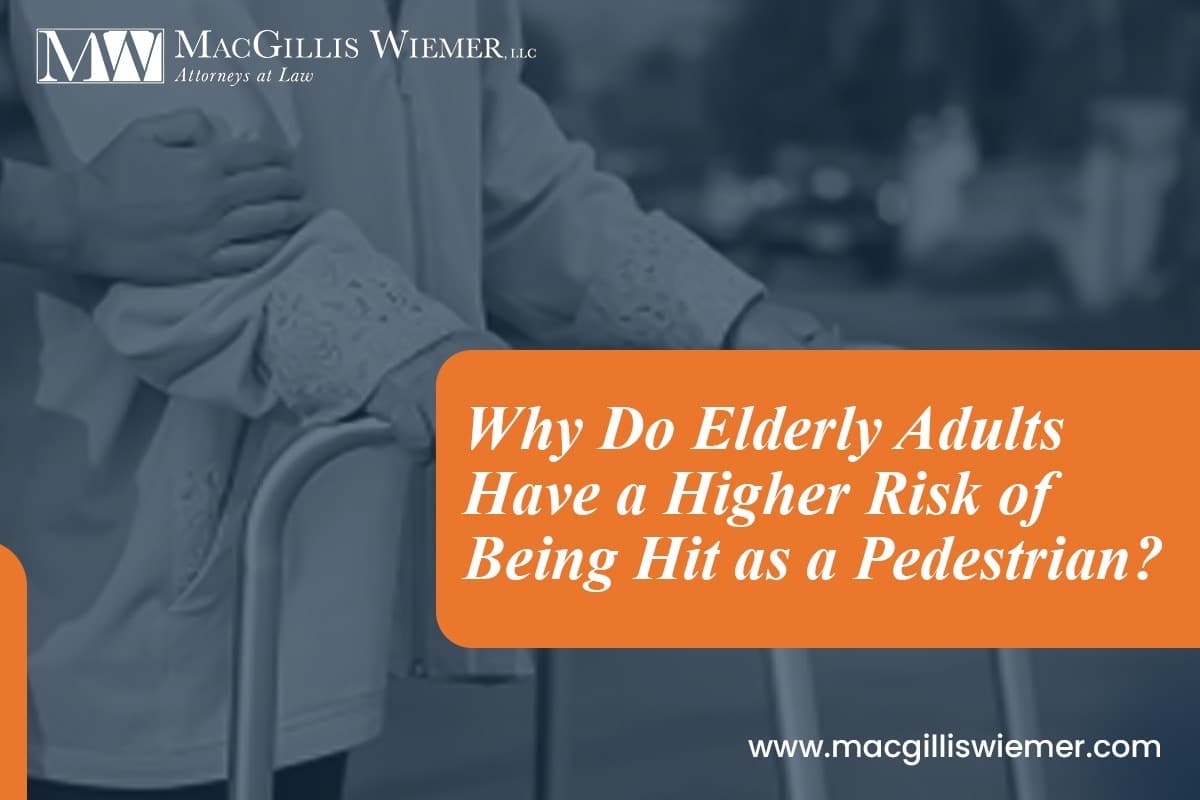Pedestrians, particularly the elderly, are at high risk of car accidents. According to the report of the Centers for Disease Control and Prevention (CDC), individuals aged 65 and above are the highest risk categories for being injured or killed in pedestrian crashes. These types of serious injuries can cause them to lose mobility, health, and self-dependence.
Why are Elderly Pedestrians More at Risk of Being Hit by a Car?
Some of the common reasons why elderly pedestrians are more likely to be struck by cars:
- Health Conditions: The natural aging process diminishes physical abilities, often leading to age-related issues such as decreased visual acuity and depth perception. These issues can make it harder for elderly adults to see and react to oncoming traffic and signals while crossing the streets. Hearing impairments can further compound these challenges, making elderly adults more susceptible to being struck by vehicles. If you or your loved one has been a victim of a pedestrian crash, rest assured that our Milwaukee personal injury attorney team is committed to helping you seek the maximum compensation you deserve.
- Quick Changing Traffic Signals: Traffic signals change very fast. Elderly pedestrians with decreased balance, muscle strength, and coordination make it challenging to cross the street.
- Poor Road Condition: Road planning and design play a pivotal role in the safety of pedestrians, especially the old and young. Poorly lit pedestrian lanes, limited crosswalks, and signals can add to the risks to elderly pedestrians.
- Increased Traffic in Urban Areas: Pedestrians who are struck by a slow-speed vehicle may not incur serious injuries and recover quickly. However, even though the vehicle is slow, it can severely injure an older adult. With drivers exceeding speed limits and increased traffic, even speeds as low as 35 to 45 mph can be fatal.
- Impatient Drivers: Distracted drivers who are in a hurry can pose a major threat to elderly pedestrians. At times, these impatient drivers get aggressive and constantly honk to move the pedestrians and make way. Elderly pedestrians with reduced mobility may get confused and walk past the vehicles, causing chaos & risk of crashes.
How to Seek Compensation for an Elderly Pedestrian Crash?
When an elderly pedestrian is hit by a car, they may still be able to prove that the other party was at fault. While this process can be complex, the injured party is entitled to full compensation for their losses.
Proving Driver is at Fault
Many times, a driver is said to be at fault for a pedestrian accident. This can be true when the injured victim was properly following the traffic signals while crossing or walking in the designated area. The driver’s fault can be proved by:
- Assessing the crash site to prove liability
- Collecting strong evidence that proves the claim
- Evaluating the value of injury claim
- Fighting for full compensation
- Taking legal action if needed
What Happens When the Victim is Partially At Fault?
In many cases, the victim can be partially or fully at fault when hit by a vehicle. Wisconsin follows the comparative negligence law for pedestrian injury claims. In that case, even if the victim is partially to be blamed for the injuries, they still can file for compensation. Having said that, this is true only if the victim is not at fault 51% or more for the injuries, though they can file a claim for damages. But, the amount for which they have proven to be at fault will be deducted from the final compensation amount.
Have You Been Injured in a Pedestrian Crash?
If you or your loved one has been injured in a pedestrian crash, you need to speak to MacGillis Wiemer, LLC, an experienced Wisconsin personal injury lawyer, as soon as possible. We understand the pain and suffering that crashes put a family and their loved ones in. Let us protect you. Call us to discuss your case.
You can also read: Who May Be At Fault for a Four-Way-Stop Crash?

